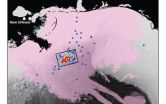(Press-News.org) This news release is available in French.
One in three children who have been reunified with their families after being placed in foster care will be maltreated again, according to a study into Quebec's youth protection system by Marie-Andrée Poirier and Sonia Hélie of the University of Montreal's School of Social Services. The study, the first of its kind in the world, was undertaken in the wake of a new law intended to improve the family stability of youth receiving child protection services.
The researchers, who are also affiliated with the Centre jeunesse de Montréal-Institut universitaire, looked at data collated in 2008 and 2009 by the province's 16 youth protection centres to identify why children were re-entering the system after having already been placed in a foster family, returned to their biological family, and had their case closed. In all, Poirier and Hélie were looking at what happened in the lives of 4,120 minors, between the ages of 0 and 17, during the five years following the closing of their initial episode of services.
The study found that 33% percent of these children subsequently required further assistance from youth protection services, and the researchers found that two factors were particularly influential as to whether or not a child would fall into this category. Firstly, age. "Children aged three to five were most at risk of being abused or neglected again. This is due to their vulnerability and the constant care that they need," Poirier said. The number of attempts that have been to reunite the child with his or her biological family is the second factor, at least amongst the youngest participants in the study. "It's not instability with regards to the foster families with whom the child has been that plays a role, but rather the back-and-forth between the biological family and other settings. We believe that young children are more sensitive to the outcomes of failures to reunite the biological family and that this has an effect on their sense of attachment."
In 2007, Quebec's youth protection law changed, introducing what is known as the "Life Plan." "The 'Life Plan' was introduced out of consideration for the family ties and long-term wellbeing of children in foster care," Poirer said. "Before these changes were introduced, the system observed a worrying number of toing and froing. Today, the law requires that a permanent life plan must be arranged for the child within a set period – within 12 months if they're younger than 2,18 months for 2 to 5 year olds, and two years after that."
"Since the law was changed, fostering is indeed less frequent and the children are more often placed with a member of their extended family or a third party who is significant to them," Hélie explained. "We wanted to check if the characteristics of a foster care placement had an influence on the likelihood of further victimisation of the child."
Their analysis confirms that Quebec's child protection system generally prefers sending the child back to his or her family, as was the case for the majority of the children identified in the study. And for the majority of these children, child protection services have no reason to be involved again – their lives are stable and their family reunification long-lasting. But this isn't the case for a full third of them, who are once again abused or neglected and are brought back into the system.
For the researchers, this suggests that reunifications fail because families are perhaps not receiving enough help from government services, either youth protection itself or the agencies that are supposed to intervene afterwards. Poirier believes that the availability of family reunification services is an issue that merits further study. "It's important to intervene within the family and to ensure there's a follow-up once the child has been returned."
INFORMATION:
About this study
The study is part of a greater project looking at the outcomes of the new youth protection law. Daniel Turcotte of Université Laval also contributed to the findings. The study will be published in the November edition of Children and Youth Services Review under the title "Risk of maltreatment recurrence after exiting substitute care: Impact of placement characteristics." The work was supported by the Fonds de recherche du Québec–Société et Culture (grant number 2008-AC-124724) and the Public Health Agency of Canada supported the translation of the paper from French to English. Quebec's youth protection system is known officially as the Direction de protection de la jeunesse and the law in question is the "Loi sur la protection de la jeunesse." The University of Montreal is officially known as Université de Montréal.
Due to its unprecedented scope, the damage assessment caused by the 2010 Deepwater Horizon spill in the Gulf of Mexico has been a challenge. One unsolved puzzle is the location of 2 million barrels of submerged oil thought to be trapped in the deep ocean.
UC Santa Barbara's David Valentine and colleagues from the Woods Hole Oceanographic Institute (WHOI) and UC Irvine have been able to describe the path the oil followed to create a footprint on the deep ocean floor. The findings appear today in the Proceedings of the National Academy of Sciences.
For this study, the ...
Humans are the only primates with large, highly visible sclera – the white part of the eye.
The eye plays a significant role in the expressiveness of a face, and how much sclera is shown can indicate the emotions or behavioral attitudes of a person. Wide-open eyes, exposing a lot of white, indicate fear or surprise. A thinner slit of exposed eye, such as when smiling, expresses happiness or joy. Averted eyes, as well as direct eye contact, can mean several things. So the eye white, or how much of it is shown and at what angle, plays a role in the social and cooperative ...
It's an often-agonizing challenge facing any parent of a child with autism: How can I help my son or daughter socialize with his or her typically developing peers? The solution, SF State's Pamela Wolfberg found, may lie in a different type of playgroup that focuses on collaborative rather than adult-directed activities.
A new study shows that "Integrated Play Groups," or IPGs, developed by Wolfberg over several years, are effective in teaching children with autism the skills they need to interact with their peers and engage in symbolic play such as pretending. In IPGs, ...
Where's the remaining oil from the 2010 Deepwater Horizon disaster in the Gulf of Mexico?
The location of 2 million barrels of oil thought to be trapped in the deep ocean has remained a mystery. Until now.
Scientist David Valentine of the University of California, Santa Barbara (UCSB) and colleagues from the Woods Hole Oceanographic Institution (WHOI) and the University of California, Irvine, have discovered the path the oil followed to its resting place on the Gulf of Mexico sea floor.
The findings appear today in the journal Proceedings of the National Academy ...
The first images of a nova during its early fireball stage--when it ejects material, and gases expand and cool--show that this activity is more complicated than predicted.
That is the conclusion, published in the current issue of Nature, from a research collaboration led by Georgia State University Astronomer Gail Schaefer that includes 37 researchers (many who are National Science Foundation (NSF)-funded) from 17 institutions. The researchers observed the expanding thermonuclear fireball from a nova that erupted last year in the constellation Delphinus.
"This is ...
The uncontrolled growth of cancer cells arises from their ability to hijack the cell's normal growth program and checkpoints. Usually after therapy, a second cancer-signaling pathway will open after the primary one shuts down — creating an ingenious escape route for the cancer cell to survive. The answer, say Case Western Reserve researchers, is to anticipate and block that back-up track by prescribing two drugs from the start. The results of the project, led by Ruth Keri, PhD, Professor and Vice Chair Department of Pharmacology, and Associate Director for Basic Research ...
1. Study: Prompt isolation of symptomatic patients is key to eliminating Ebola
Isolating the sickest Ebola-infected individuals before they progress into their late phase of illness can effectively eliminate the Ebola epidemic in Liberia, according to a modeling study being published in Annals of Internal Medicine. Currently, West Africa is in the midst of the largest and deadliest Ebola epidemic ever recorded. Liberia has been especially hard-hit with more than 3,500 infections and 2,000 deaths in the past three months. Researchers developed a random transmission model ...
COLUMBUS, Ohio – The drug erlotinib is highly effective in treating advanced-stage lung cancer patients whose tumors have a particular gene change, but when the same drug is used for patients with early-stage tumors with the same gene change, they actually fare worse than if they took nothing. A study by researchers at The Ohio State University Comprehensive Cancer Center – Arthur G. James Cancer Hospital and Richard J. Solove Research Institute (OSUCCC – James) and at Cincinnati Children's Hospital might show why.
Oncologists use erlotinib to treat ...
SPOKANE, Wash.—Americans are in a world of hurt.
Nearly one in five U.S. adults are in pain most every day for spells of three months or longer, according to an analysis by Jae Kennedy, professor of health policy and administration at Washington State University Spokane. The estimated 39 million adults in persistent pain outnumber the residents of California.
Previous studies have said so much pain costs hundreds of billions of dollars a year in lost productivity and health care. And that doesn't take into account pain's psychic toll.
"A sizeable portion of American ...
Chicago, October 27, 2014—The Associated Press-NORC Center for Public Affairs Research today released the results of a major new study and related reports on the recovery from Superstorm Sandy in 12 New York and New Jersey neighborhoods hard hit by the 2012 storm.
It is the second AP-NORC study that has focused on the aftermath of Superstorm Sandy, with findings that emphasize the important role social factors play in a neighborhood's resilience: the ability of people and their social systems to survive, adapt and continue moving forward after a disaster. Funding ...



